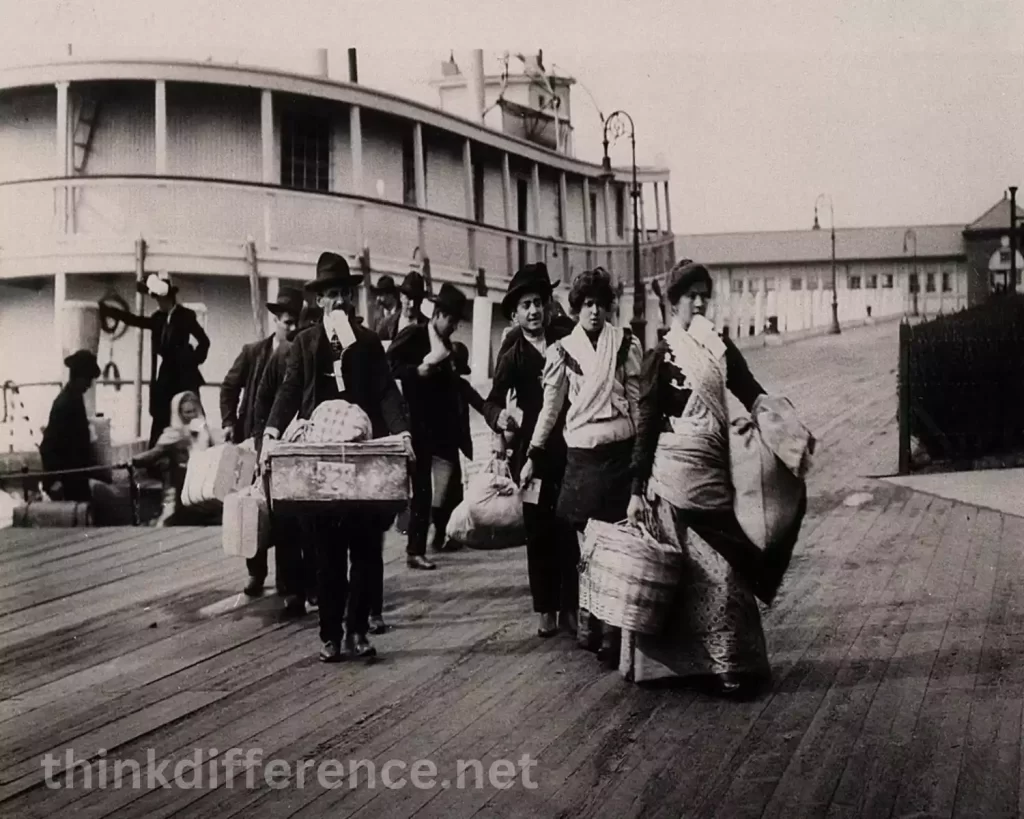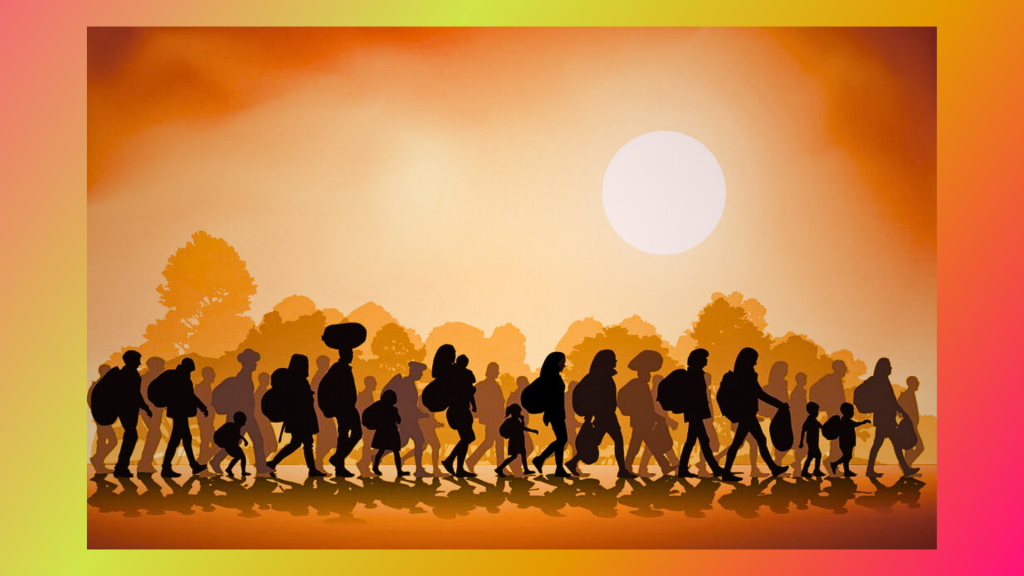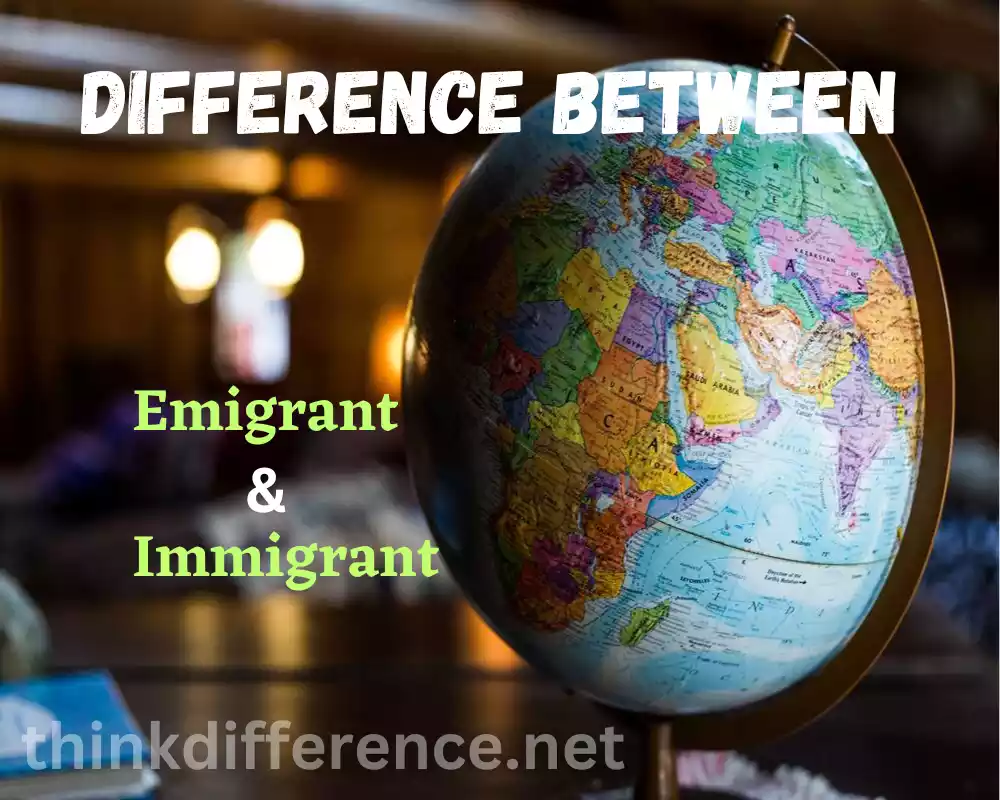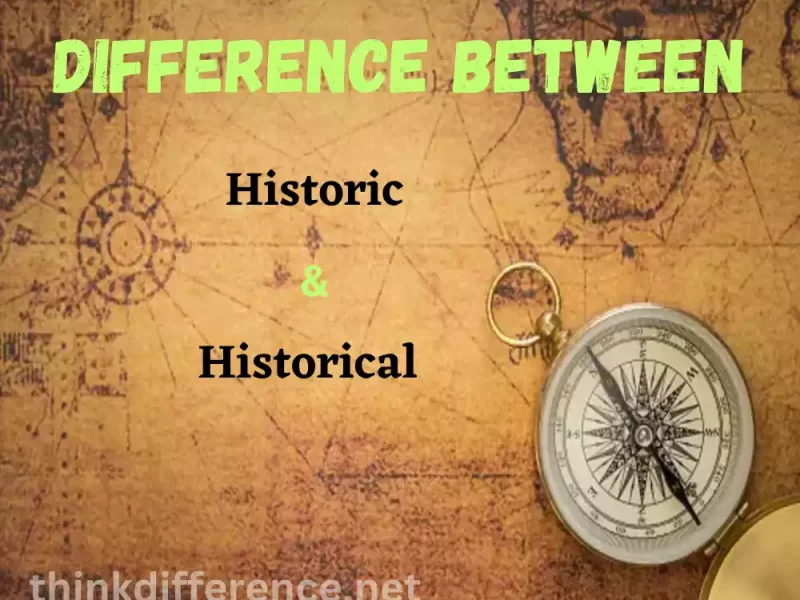Definition of Emigrant and Immigrant
Emigrant: Emigrants refers to anyone who has relocated from their country or region for either personal or economic reasons in another nation, either temporarily or permanently. Emigration refers to any practice by which individuals leave their country of origin (often due to economic, political or other pressure).

Emigration usually includes both permanent or semi-permanent relocation to new regions/countries with the intent to change residence status as well as begin living a different lifestyle upon arriving there – for greater opportunities or simply leaving their country of origin altogether. People migrate in search of better living conditions or freedom from pressures surrounding it by seeking opportunities elsewhere or simply hoping that life awaits elsewhere than at home!
Immigrant: Immigrants refers to individuals who relocate from one country or area into a second for purposes of making that their permanent home, making an impactful impression when arriving in their destination country. The term reflects this. Individuals moving abroad typically do so to establish permanent or long-term residency elsewhere in another nation.

Immigrants may relocate for various reasons, including seeking better opportunities in business or education. Reconnecting with family; seeking asylum due to political turmoil in their home countries or persecution; and so forth. Immigrants usually go through legal processes to secure permits or visas necessary to enter and reside in a particular country of choice.
Their goal is usually becoming part of its culture and society and adapting to local customs and practices as quickly as possible, in addition to seeking citizenship or permanent resident status for themselves or permanent residency status for themselves and/or family members they might bring with them.
Differences between Emigrant and Immigrant
The main differences between immigrants and emigrants can be summarized as follows:
1. Direction of movement:
- Emigrant: Emigrant is used to describe individuals who leave their country of origin or region to settle elsewhere, either temporarily.
- Immigrants: Immigrants seek new homes by moving abroad.
2. Motivation:
- Emigrant: Emigrants may leave their homelands due to any number of compelling factors, including economic troubles and political unrest as well as social concerns.
- Immigrant: Immigrants often migrate for specific reasons such as earning more income, better educational and job prospects or seeking asylum or refuge in another country.
3. Legal status:
- Emigrants: Emigrants may or may not possess legal documents when leaving their country of origin. This depends on a number of circumstances surrounding their departure from home.
- Immigrants: Immigrants typically require legal permission, such as permits or visas, in order to enter and remain within a country they choose. A formal process must be followed in order to acquire this documentation.
4. Cultural and social integration:
- Emigrant: Emigrants may retain strong ties to their home country and may continue to identify with their home culture even after settling in a new country.
- Immigrant: Immigrants aim to integrate into the Society and culture of the new country, adopting new customs and often seeking to become Citizens or permanent residents.
5. Perception and terminology:
- Emigrant: Emigrant is used to describe individuals who have left their country of origin or heritage and moved elsewhere, regardless of intent.
- Immigrant: Immigrant is used to refer to individuals who have immigrated into a new nation or area.
Understanding that terms may change according to context is of vital importance in order to grasp the complexity of global migration. Factors like legal framework, perspective and individual circumstances all affect these terms differently. Motivations and experiences of emigrants versus migrants differ significantly, so understanding and acknowledging this difference are integral in appreciating its complexity.
Examples of Emigrants and Immigrants
Examples of Emigrants:
- People from Mexico moving into the US seeking more job opportunities.
- A family from Syria who flees the civil war and becomes refugees in Germany, seeking safety and stability.
- An individual from Ireland who emigrates to Australia to pursue a higher standard of living and career prospects.
- A skilled professional from India who moves to Canada to take advantage of the country’s immigration policies and work in their field of expertise.
- A retiree from the United Kingdom who sells their property and moves to Spain to enjoy a more favorable climate and lower living costs.
Examples of Immigrants:
- Engineers from India obtain work visas before traveling to America to join an IT firm as engineers.
- A student from China who receives admission to a university in the United Kingdom and moves there to pursue higher
education. - A family from Venezuela who migrates to Colombia to escape political unrest and seek better living conditions.
- A skilled worker from the Philippines who immigrates to New Zealand under a skilled migrant category to contribute to the country’s workforce.
- A refugee from Somalia who arrives in Canada seeking protection and a new start after escaping conflict and persecution in their home country.
These individuals and families represent examples of migrants leaving their country of origin (emigrants) or moving to new locations due to various reasons, reflecting all kinds of migration worldwide.
Reasons for Emigration and Immigration
Reasons for Emigration:
- Economic factors: Many people emigrate to seek better job opportunities, higher wages and improved living standards. Economic issues include job and pay insecurity, poverty or instability of their country of origin.
- Political Issues: When political systems become unstable or oppressive, human rights violations or lack of political freedoms occur, individuals often flee for safety in another country and asylum as an escape option.
- Social causes: Emigration may be motivated by discrimination, religious or ethnic intolerance, sexual preference issues and tension within society. All factors which lead to wanting an improved living situation.
- Education and career prospects: Some individuals emigrate to access better educational opportunities or to enhance their career prospects in a specific field. They may seek education at renowned universities or relocate to countries with a strong job market in their desired profession.
Reasons for Immigration:
- Economic opportunities: Many migrants migrate to countries with strong economies and strong job markets in search of better job prospects, higher wages and greater economic benefits for themselves and their families alike.
- Future Career and Educational Opportunities: Immigrating is often motivated by an ambition for higher education or to acquire specific skills that expand career options. Individuals searching for immigrant visas could select countries offering prominent universities or industries aligned to their professional aspirations goals.
- Seeking refuge or asylum: People seeking asylum or refuge People fleeing conflict, war, persecution or human rights violations within their home nation can seek sanctuary by migrating to another nation that provides asylum or refugee status and seek safety or protection there.
- Family Reunification: One motivation for immigration may be family reunion. Immigration programs for families allow migrants to reunite with loved ones who may have already relocated in a foreign nation.
- Quality of life and lifestyle: The desire for greater quality of life often motivates immigration. This may encompass elements like healthcare and social welfare provision; environmental conditions; personal security measures and general well-being are also all components that factor into this equation.
Motivation for immigration or emigration may vary widely among individuals reasons listed may not be comprehensive and an individual could have different or distinct reasons behind their choice to relocate overseas or immigrate.
Impact of Emigration and Immigration

Emigration and immigration both can have profound ramifications on various aspects of host countries as well as destinations, with lasting repercussions for all involved.
Here are just a few major effects:
- Economic impact:
- Emigration: Emigration can lead to a loss of skilled and talented individuals from the home country, which can hinder economic development and productivity. Emigrating could result in the loss of funds returned back home by Emigrants.
- Immigration: Immigration can contribute to the labor force of the destination country, filling gaps in the workforce and bringing in new skills and expertise. Immigrants can contribute to economic growth, innovation, entrepreneurship and tax revenues.
- Social impact:
- Emigration: Emigration can lead to a “brain drain” in the home country, as skilled professionals and educated individuals leave, resulting in a loss of intellectual capital. It can also impact family dynamics, separating family members and causing emotional and social challenges.
- Immigration: Immigration can contribute to cultural diversity and enrich the social fabric of the destination country. It can also create social tensions, challenges in integration and strains on public services, housing and infrastructure.
- Demographic impact:
- Emigration: Emigration can lead to demographic imbalances in the home country, such as an aging population or a disproportionate number of certain age groups. This can impact the labor market, social welfare systems and overall population dynamics.
- Immigration: Immigration can impact the demographic composition of the destination country, including population growth, age structure and ethnic diversity. It can also contribute to labor force growth and alleviate demographic challenges, such as an aging population.
- Cultural impact:
- Emigration: Emigration can result in the preservation and spread of the home country’s culture, traditions and language in diaspora communities. It can also lead to the assimilation of emigrants into new cultural environments and the adoption of new cultural practices.
- Immigration: Immigration can introduce new cultures, languages and traditions to the destination country, enriching its cultural landscape. It can promote cultural exchange, intercultural understanding and the development of multicultural societies.
- Political impact:
- Emigration: Emigration can have political implications in the home country, such as a loss of voting power or the formation of diaspora communities that maintain political ties and influence. It can also create challenges in governance and policy-making.
- Immigration: Immigration can have political implications in the destination country, including debates over immigration policies, national identity and social cohesion. It can influence political landscapes, public opinion and policy decisions related to citizenship, integration and social welfare.
Realize the impact of migration can vary considerably based on factors like its size and type, affected countries and economic and social conditions in each. Policies, integration initiatives and support systems could assist with managing immigration to maximize positive effects while mitigating possible problems that arise as a result.
Challenges Faced by Emigrants and Immigrants
Challenges faced by Emigrants:
- Adjustment to a new culture: Emigrants often face challenges in adapting to a new culture, language and social norms. They may experience culture shock, feelings of isolation and difficulties in building new social networks.
- Separation from family and support systems: Most emigrants experience feelings of isolation, homesickness and emotional challenges during their time abroad. They may also face difficulties in maintaining relationships and staying connected with loved ones back home.
- Employment and economic challenges: Emigrants may encounter difficulties in finding employment that matches their skills and qualifications in the new country. They may face language barriers, lack of recognition of foreign credentials and competition in the job market.
- Legal and documentation issues: Emigrants may face challenges related to obtaining and maintaining legal documentation, such as visas, work permits or residency status. They may need to navigate complex immigration processes and comply with changing immigration policies.
- Discrimination and xenophobia: Emigrants may face discrimination and prejudice based on their nationality, ethnicity or immigrant status. They may experience unequal treatment, stereotypes and limited opportunities due to their immigrant background.
Challenges faced by Immigrants:
- Language barriers: Immigrants often face challenges in learning and communicating in a new language. Language barriers may impede people’s ability to obtain employment and services and take part in society.
- Cultural adaptation and integration: Immigrants may struggle with adapting to a new cultural environment, customs and social norms. They may experience difficulties in understanding and navigating new systems, traditions and ways of life.
- Employment and skills recognition: Immigrants may encounter challenges in finding employment that matches their skills and qualifications. Their foreign credentials may not be recognized and they may face barriers in accessing professional networks and job opportunities.
- Social exclusion and isolation: Immigrants may face social exclusion, discrimination and limited social connections in the new country. At times they might experience difficulty developing friendships and creating networks of support. These difficulties might keep them feeling as though they do not belong or feel connected.
- Housing and economic challenges: Immigrants may face difficulties in finding affordable housing, particularly in high-cost areas. Economic disparities and limited financial resources can pose challenges in meeting basic needs and achieving economic stability.
- Access to Healthcare and Social Services: An immigrant may encounter difficulty accessing social services and health benefits due to language barriers, inadequate knowledge about available services or immigration status restrictions.
As immigrants and emigrants experience various situations within a particular country or context and have different support networks available, the issues they encounter will vary accordingly. Addressing these challenges often requires policy measures, community support and efforts to promote inclusivity, equal opportunities and social integration.
Conclusion
Emigration and immigration are intricate components of human history and continue to shape the world we live in. The movement of people across borders brings both opportunities and challenges for individuals and societies alike.
By understanding the complexities of migration, we can work towards creating more inclusive and compassionate policies and fostering a global community that respects the rights and dignity of all individuals.



